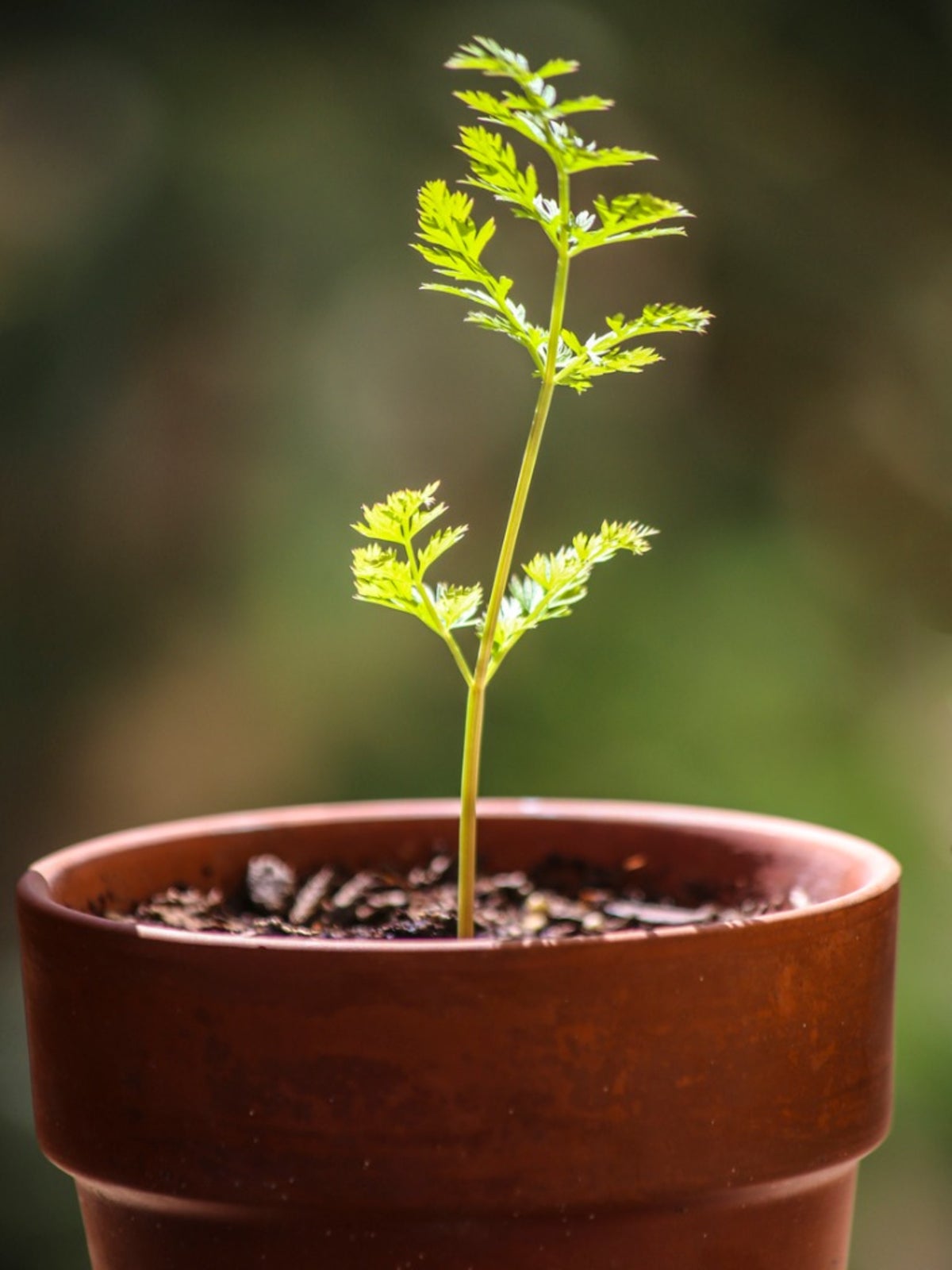Growing Carrots In Containers - Tips For Growing Carrots In Containers


Growing carrots in containers is an excellent project for early spring or fall, as carrots prefer cooler temperatures than vegetables of summer. Planting a crop of container carrots during these seasons can result in a worthwhile harvest. You may hear that container grown carrots or carrots grown in the ground are difficult. While carrots can be considered finicky under some growing conditions, once you learn how to container grow carrots, you'll want to make them a regular planting.
How to Grow Container Carrots
Grow carrots in containers in soil that is lightweight and well drained. Grow carrots in containers that are deep enough for the carrots' development. Containers should have drainage holes, as root crops may rot if left in soggy soil. Miniature and Oxheart varieties are most suitable when you grow carrots in containers. Roots of these carrots are only 2 to 3 inches (5-7.6 cm.) long at maturity. They are sometimes called Amsterdam varieties. Container grown carrots need regular moisture. Containers require watering more often than crops in the ground. Mulch can help retain moisture when you grow carrots in containers and help keep weeds down. Growing carrots in containers, as with other root crops, produce better with little root disturbance, such as that of pulling weeds. Plant container carrots outdoors when temperatures reach 45 F. (7 C.). Growing carrots in containers produces the best formed carrot before temperatures reach 70 F. (21 C.), but successful production of growing carrots in containers occurs between 55 and 75 F. (13-24 C.). When growing carrots in containers in late summer, provide a shady area that can keep temperatures 10 to 15 degrees lower than in sunny spots. When you grow carrots in containers, fertilize with a balanced plant food that is light on nitrogen, the first number in the three-digit ratio. Some nitrogen is necessary, but too much can encourage excessive growth of foliage with less going to carrot formation. Thin seedlings of growing carrots to 1 to 4 inches (2.5-10 cm.) apart when they are 2 inches (5 cm.) in height. Most varieties are ready for harvest in 65 to 75 days after planting. Containers allow the flexibility of moving the crop to a cooler spot or covering if temperatures go below 20 F. (-7 C.). Container carrots can sometimes be overwintered for an early spring harvest. Carrots that are over-wintered can be used as needed, as growth will slow in temperatures below 55 F. (13 C.).
Sign up for the Gardening Know How newsletter today and receive a free copy of our e-book "How to Grow Delicious Tomatoes".

Becca Badgett was a regular contributor to Gardening Know How for ten years. Co-author of the book How to Grow an EMERGENCY Garden, Becca specializes in succulent and cactus gardening.